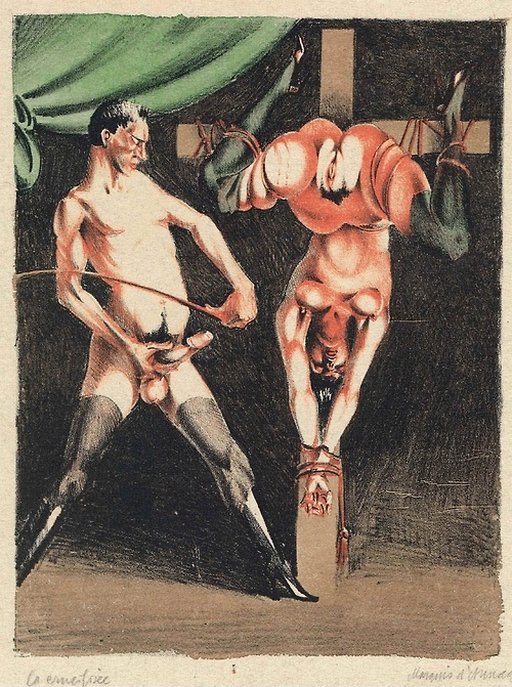Upside Down Pussy Crucifixion
This bit of vintage-looking art caught my eye because of the unique (and perhaps impractical) positioning:
Her pussy and inner thigh curves are conveniently placed for the cruel-looking whalebone switch, that’s for sure!
If you can make out the indistinct script caption and signature, please do chime in in the comments; for they have defeated my best efforts.
See Also:





After spending quite some time with this picture and picture editing software, I believe it´s Italian and reads “La amatrice” – The lover (female). The “a” is quite tricky, but once you recognize it…
Cheers
Chross
I do believe you are right! Thanks, Chross. Sadly the signature is even smaller and more indistinct. :(
I believe the signature starts with “Marquis”. Can’t make out more than that, though.
The title appears to read “La crucifi(s)ee”. Without the s this means “the crucified (female)” and is correct French. The artist claims to be the Marquis “d’itunde” although I’m not sure that is the correct spelling, which may suggest he is from the same persuasion as Le Marquis de Sade. The lack of capital letter at the beginning of his name and the misspelling of crucifiee suggest it is not written by a French native and therefore may be claiming fame by association. Nonetheless, the painting has a C18th French style so perhaps it is genuinely historical. He certainly has a vintage appendage.
C’est effectivement un Français surement le pseudo Marquis d’Auxer(re) la fin peu être coupée.
Le titre est bien “La crucifiée” c’est la patte du “F” qui redescend avant le “i”
Thank you Ellie C.!
The image is a coloured lithography, so it can’t be 18th century. Sitilistically it seems to be from the 1920s or 1930s. Ellie C.’s reading of the scripts seems right to me. The question is: Who hides himself behind the pseudonyme?